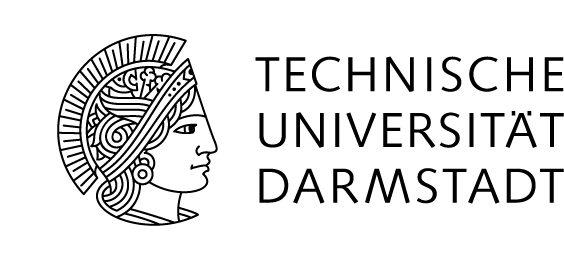Übersicht
Introduction to Theoretical Astrophysics
Gabriel Martinez-Pinedo, Tel. 16 21545, gabriel.martinez@physik.tu-..., Schlossgartenstraße 2, room 105
Exercises: Heiko Möller, Tel. 16 21544, hmoeller@theorie.ikp.physik.tu-..., Schlossgartenstraße 2, room 104
Introduction to Theoretical Astrophysics
The course is taught in English byGabriel Martinez-Pinedo, Tel. 16 21545, gabriel.martinez@physik.tu-..., Schlossgartenstraße 2, room 105
Exercises: Heiko Möller, Tel. 16 21544, hmoeller@theorie.ikp.physik.tu-..., Schlossgartenstraße 2, room 104
Outline
This course covers the basic techniques and methods used in modern theoretical astrophysics and deals with a broad range of topics related to stars, galaxies and the universe.Main topics include:
- Course description
- Introduction
- Properties of stars (Slides, Notes)
Additional material:- Physical constants, Astrophysical constants
- Blackbody curves & UBV Filters: This is an interactive interface where you can see how the blackbody Planck distribution changes as a function of temperature and the effect of different filters.
- Hydrogen Energy Levels: Here you can get insight in the energy levels of hydrogen and the population of the different levels with temprature.
- Eclipsing Binary: Explore the orbits of two eclipsing binaries and how the emitted light changes with the phase of the orbit.
- Hertzsprung-Russell
Diagram: Here you can explore where a star will appear in the
Hertzsprung-Russell diagram depending on its luminosity and temperature.
- Exercise Sheet 1
- Stellar Structure
- Equation of state (notes,slides)
Exercise Sheet 2 - Energy transport (notes,slides)
Exercise Sheet 3
Roger Balian and Jean-Paul Blaizot, Stars and statistical physics: A teaching experience (article discussing many of the aspects introduced in the previous lectures) - Simple stellar models (notes)
Lane-Endem Wolfram Demonstration Project (Slightly Modified version from the project available here)
Exercise Sheet 4 - The Insterstellar Medium and Star Formation (Slides,Notes)
Exercise Sheet 5 - Stellar evolution and supernova
explosions
S. Woosley and H.-Th. Janka, The physics of core-collapse supernovae - The degenerate remnants of stars
(Slides,Notes)
Richard R. Silbar and Sanjay Reddy, Neutron stars for undergraduates,Erratum (article discussing several aspects of the lecture and their extension to neutron stars)
Mathematica notebook computing the structure of White Dwarfs and Neutron stars (Notebook, pdf) - The Milky Way
- The Nature and Evolution of Galaxies
- Active Galaxies and the Structure of the universe
Excercise Sheet 6 - Cosmological models
(Notes, Slides)
Excercise Sheet 7 - Evolution of the Universe
(Notes, Slides)
The values of the cosmological parameters used in the lecture have been obtained from this recent paper of the Planck collaboration: Planck 2015 results. XIII. Cosmological parameters. In some cases values listed in the astrophyscial constants from the particle data group are used. - Observational cosmology
(Notes,
Slides)
Charles L. Bennett, Cosmology from start to finish (Nice article providing a summary of the main cosmological topics discussed in the lectures)
Tutorials by Wayne Hu discussing different aspects of Cosmic Microwave Background Anisotropies
Here is the list with the assigned times for the examination.
Bibliography
- Bradley W. Carroll and Dale A. Ostlie: An Introduction to Modern Astrophysics, Pearson/Addison-Wesley, San Francisco, 2nd ed. 2007
- Dan Maoz, Astrophysics in a Nutshell (Princenton University Press, 2016)
- T. Padmanabhan, Three volumes on Theoretical Astrophysics (Cambridge University Press)
- M. Bartelmann, Theoretical Astrophysics: An Introduction (WILEY-VCH)
- Rudolf Kippenhahn, Alfred Weigert, Achim Weiss: Stellar Structure and Evolution, Springer-Verlag, Berlin Heidelberg, 2012 (Accesible online from the TU Darmstadt network)
- André Maeder: Physics, Formation and Evolution of Rotating Stars, Springer-Verlag, Berlin Heidelberg, 2009 (Accesible online from the TU Darmstadt network)
- Peter Schneider, Extragalactic Astronomy and Cosmology, Springer-Verlag, Berlin Heidelberg, 2015 (Accesible online from the TU Darmstadt network)
Recommended web addresses
- An online introduction to basic astronomical concepts can be found at Astronomy Notes
- Astronomy Picture of the Day: Each day a different image or photograph of our fascinating universe is featured, along with a brief explanation written by a professional astronomer.
- Open Astrophysics Bookshelf: A collection of open-licensed, freely available texts on various topics in astrophysics
- MESA (Modules for Experiments in Stellar Astrophysics): An open-source stellar structure and evolution code that is modular and accessible


